Incoming! We’ve Got Science From Jupiter!
Incoming! We’ve Got Science from Jupiter!
Our Juno spacecraft has just released some exciting new science from its first close flyby of Jupiter!

In case you don’t know, the Juno spacecraft entered orbit around the gas giant on July 4, 2016…about a year ago. Since then, it has been collecting data and images from this unique vantage point.

Juno is in a polar orbit around Jupiter, which means that the majority of each orbit is spent well away from the gas giant. But once every 53 days its trajectory approaches Jupiter from above its north pole, where it begins a close two-hour transit flying north to south with its eight science instruments collecting data and its JunoCam camera snapping pictures.

Space Fact: The download of six megabytes of data collected during the two-hour transit can take one-and-a-half days!

Juno and her cloud-piercing science instruments are helping us get a better understanding of the processes happening on Jupiter. These new results portray the planet as a complex, gigantic, turbulent world that we still need to study and unravel its mysteries.
So what did this first science flyby tell us? Let’s break it down…
1. Tumultuous Cyclones

Juno’s imager, JunoCam, has showed us that both of Jupiter’s poles are covered in tumultuous cyclones and anticyclone storms, densely clustered and rubbing together. Some of these storms as large as Earth!

These storms are still puzzling. We’re still not exactly sure how they formed or how they interact with each other. Future close flybys will help us better understand these mysterious cyclones.

Seen above, waves of clouds (at 37.8 degrees latitude) dominate this three-dimensional Jovian cloudscape. JunoCam obtained this enhanced-color picture on May 19, 2017, at 5:50 UTC from an altitude of 5,500 miles (8,900 kilometers). Details as small as 4 miles (6 kilometers) across can be identified in this image.

An even closer view of the same image shows small bright high clouds that are about 16 miles (25 kilometers) across and in some areas appear to form “squall lines” (a narrow band of high winds and storms associated with a cold front). On Jupiter, clouds this high are almost certainly comprised of water and/or ammonia ice.
2. Jupiter’s Atmosphere
Juno’s Microwave Radiometer is an instrument that samples the thermal microwave radiation from Jupiter’s atmosphere from the tops of the ammonia clouds to deep within its atmosphere.

Data from this instrument suggest that the ammonia is quite variable and continues to increase as far down as we can see with MWR, which is a few hundred kilometers. In the cut-out image below, orange signifies high ammonia abundance and blue signifies low ammonia abundance. Jupiter appears to have a band around its equator high in ammonia abundance, with a column shown in orange.

Why does this ammonia matter? Well, ammonia is a good tracer of other relatively rare gases and fluids in the atmosphere…like water. Understanding the relative abundances of these materials helps us have a better idea of how and when Jupiter formed in the early solar system.
This instrument has also given us more information about Jupiter’s iconic belts and zones. Data suggest that the belt near Jupiter’s equator penetrates all the way down, while the belts and zones at other latitudes seem to evolve to other structures.
3. Stronger-Than-Expected Magnetic Field

Prior to Juno, it was known that Jupiter had the most intense magnetic field in the solar system…but measurements from Juno’s magnetometer investigation (MAG) indicate that the gas giant’s magnetic field is even stronger than models expected, and more irregular in shape.

At 7.766 Gauss, it is about 10 times stronger than the strongest magnetic field found on Earth! What is Gauss? Magnetic field strengths are measured in units called Gauss or Teslas. A magnetic field with a strength of 10,000 Gauss also has a strength of 1 Tesla.

Juno is giving us a unique view of the magnetic field close to Jupiter that we’ve never had before. For example, data from the spacecraft (displayed in the graphic above) suggests that the planet’s magnetic field is “lumpy”, meaning its stronger in some places and weaker in others. This uneven distribution suggests that the field might be generated by dynamo action (where the motion of electrically conducting fluid creates a self-sustaining magnetic field) closer to the surface, above the layer of metallic hydrogen. Juno’s orbital track is illustrated with the black curve.
4. Sounds of Jupiter
Juno also observed plasma wave signals from Jupiter’s ionosphere. This movie shows results from Juno’s radio wave detector that were recorded while it passed close to Jupiter. Waves in the plasma (the charged gas) in the upper atmosphere of Jupiter have different frequencies that depend on the types of ions present, and their densities.
Mapping out these ions in the jovian system helps us understand how the upper atmosphere works including the aurora. Beyond the visual representation of the data, the data have been made into sounds where the frequencies and playback speed have been shifted to be audible to human ears.
5. Jovian “Southern Lights”

The complexity and richness of Jupiter’s “southern lights” (also known as auroras) are on display in this animation of false-color maps from our Juno spacecraft. Auroras result when energetic electrons from the magnetosphere crash into the molecular hydrogen in the Jovian upper atmosphere. The data for this animation were obtained by Juno’s Ultraviolet Spectrograph.

During Juno’s next flyby on July 11, the spacecraft will fly directly over one of the most iconic features in the entire solar system – one that every school kid knows – Jupiter’s Great Red Spot! If anybody is going to get to the bottom of what is going on below those mammoth swirling crimson cloud tops, it’s Juno.

Stay updated on all things Juno and Jupiter by following along on social media: Twitter | Facebook | YouTube | Tumblr
Learn more about the Juno spacecraft and its mission at Jupiter HERE.
More Posts from Jovian-witch and Others




Everyone is familiar with Jupiter’s great red spot, but did you know Jupiter also has a series of smaller white storms called pearls? Currently there are 8, but anywhere between 6-9 of them have been witnessed over the last three decades. Pretty cool, right?
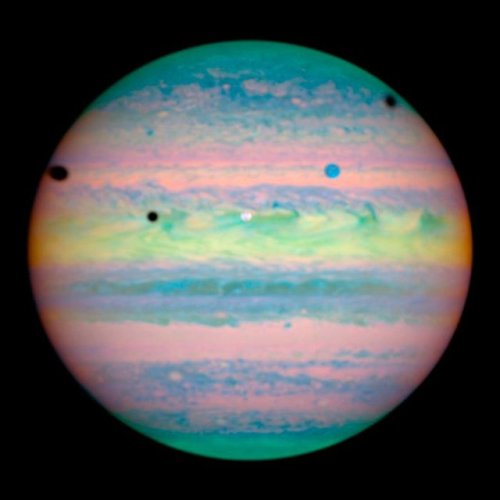
In this composite image from near-infrared light, two of Jupiter’s moons are visible against the planet. The white circle in the middle of Jupiter is Io, and the blue circle at upper right is Ganymede. The three black spots are shadows cast by Io, Ganymede, and another moon, Callisto.
Image Credit: NASA, ESA, and E. Karkoschka (University of Arizona)
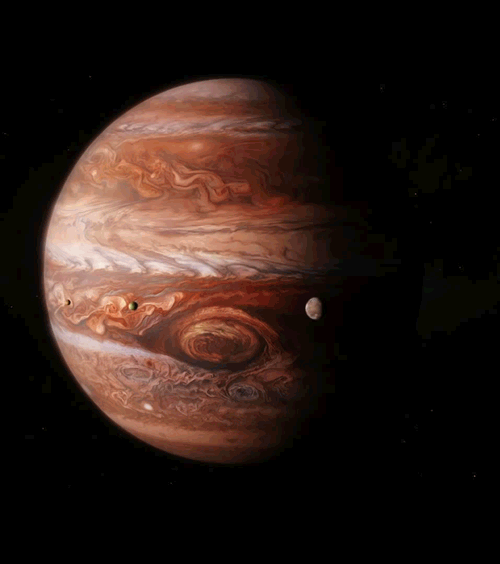
Imagine yourself in space
![My Images Of Mars, Jupiter, And Saturn Taken With A Cheap Webcam And Telescope. [OC] Via /r/spaceporn](https://64.media.tumblr.com/8b04e71b2cad388b036afb649af8b7ba/2e4659443b845038-fb/s500x750/ed27aaea68956836311dbf6cc91bc65bb0013e0a.jpg)
My images of Mars, Jupiter, and Saturn taken with a cheap webcam and telescope. [OC] via /r/spaceporn https://ift.tt/3jXNrDk
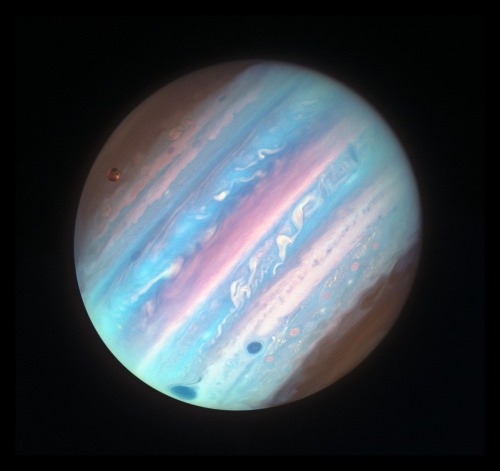
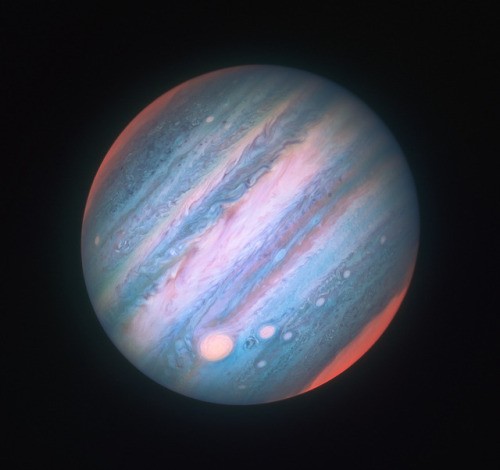
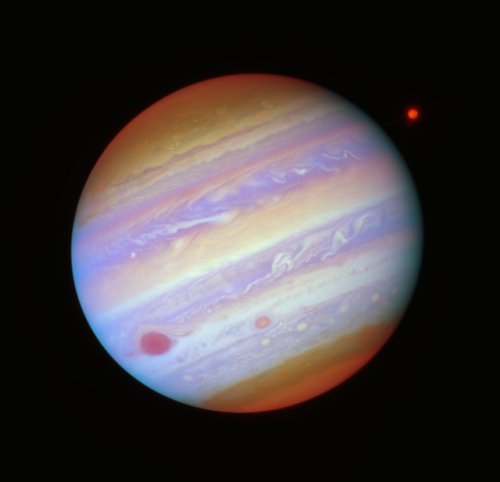
Jupiter (filtered) by Judith Schmidt.
cosmic witchcraft 101: jovian magick ♃
Jupiter is the fifth planet from the Sun. Due to its massive size, there are multiple ways the planet could have formed. Regardless of its formation process, some scientists believe that Jupiter migrated inward right up to the orbit of Mars after its initial formation. This is referred to as the Grand Tack Hypothesis. In the early solar system, Neptune and the other outer planets may have begun interacting with icy planetesimals, sending comets from one planet to the next, causing Uranus, Neptune, and Saturn to move outwards as the comets moved inwards. When the comets reached Jupiter, the planet’s massive gravity flung the comets into highly elliptical orbits or out of the solar system entirely and Jupiter migrated inwards to conserve angular momentum.
As it made its way towards the Sun, Jupiter’s gravity would have prevented the asteroid belt material from forming into planets and swept away large amounts of material that may have made Mars more massive. Thanks to Saturn, Jupiter stopped its inward migration and turned around, settling approximately where we see it today. As Jupiter moved inward and Saturn moved outward, it’s theorized that they became locked in a 3:2 orbital resonance, with Saturn finishing 3 orbits around the Sun for Jupiter’s 2. Jupiter’s migration may have also brought icy and gaseous material into the inner solar system, helping the inner planets form their atmospheres and perhaps even providing those vital life-giving compounds we can thank for our existence today.
Facts:
Jupiter produces more heat than it receives from the Sun.
Jupiter is more than twice as massive as all the other planets combined.
The planet has at least 67 moons.
Jupiter is NOT a failed star. The smallest stars in the observable universe have about 1/12 of the Sun’s mass, and Jupiter has about 1/1000th of the Sun’s mass. Jupiter is simply a colossal planet.
The Great Red Spot is larger than Earth. It’s a colossal hurricane that’s been going on since the 17th century, maybe even before that.
Jupiter rotates faster than any of the other planets; a Jovian day is only about 10 Earth hours. It takes 11.86 years to orbit around the Sun.
Lighter stripes along the planet are called zones and darker stripes are called belts. They flow in opposite directions and turbulence between regions causes the Jupiter’s storms.
Magickal Correspondences*
Colors: red, white, yellow, brown, purple
Intents: growth, expansion, prosperity, justice, exploration, freedom, protection, spiritual evolution, success, meditation, psychic development, confidence, storm magick
Herbs: frankincense, rosemary, oak, cedar, nutmeg, sage, anise, catnip, sandalwood, rosehips, dandelion, fennel, tansy
Crystals: tin, amethyst, lepidolite, sugilite, lapis lazuli, sapphire, diamond, agate, antimony, rhodocrosite, aragonite, jasper, onyx, amber
*some of these correspondences are based on traditional associations and some are based on my personal associations


Archetype Inspirations | Jupiter Witch

For Jupiter and its limitless expansion.
Real stoked with how this one came out 💪🏻
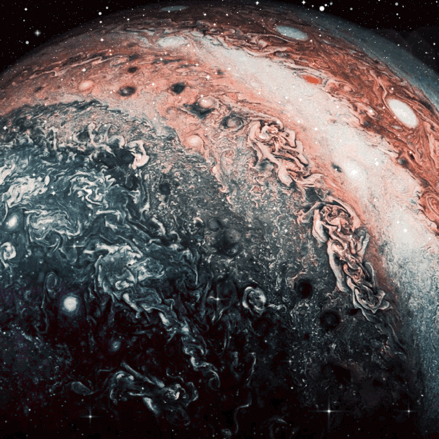



Jupiter ✨ gifs made by me :)

Spell Circle
Purpose: To sanctify and maintain a space
Recommended Casting Type: Altar
Recommended Anchor: Wood
Outer Ring Translation: “Sanctify this space. Only my circle of spirits and gods may enter.”
Language: English
Script: Woevian
Planetary Correspondences: Sun/Jupiter/Saturn
Directional Correspondences: Center
Color Correspondences: Silver
Numerology: 0/1/3
-
 leda-timeandspace liked this · 1 year ago
leda-timeandspace liked this · 1 year ago -
 traitorcas liked this · 1 year ago
traitorcas liked this · 1 year ago -
 chelseafcazul liked this · 1 year ago
chelseafcazul liked this · 1 year ago -
 k-riggy liked this · 1 year ago
k-riggy liked this · 1 year ago -
 mizar2 liked this · 2 years ago
mizar2 liked this · 2 years ago -
 sergioballester-blog liked this · 4 years ago
sergioballester-blog liked this · 4 years ago -
 tiredsnails liked this · 4 years ago
tiredsnails liked this · 4 years ago

blog dedicated to my work with the planet Jupiter
96 posts